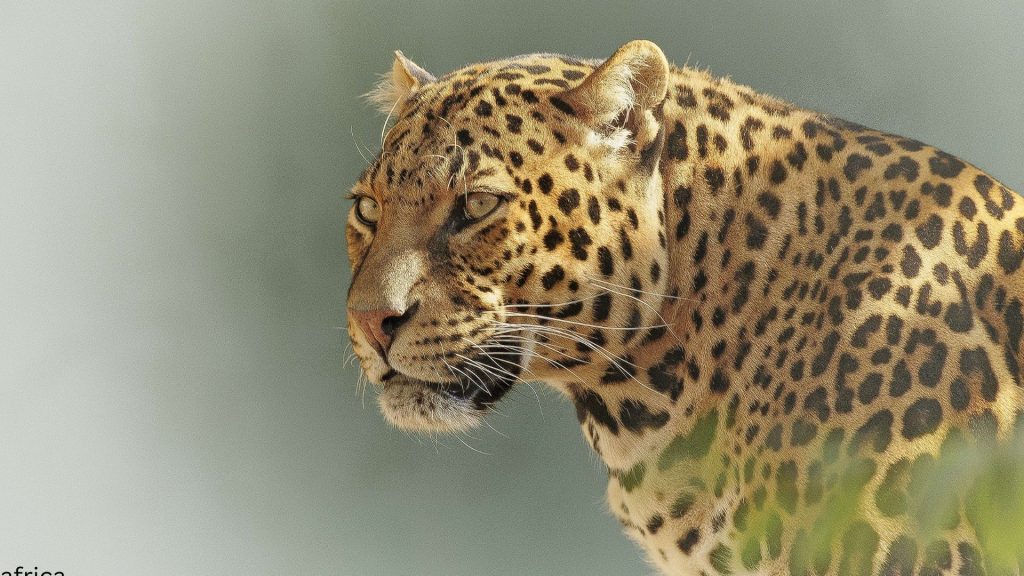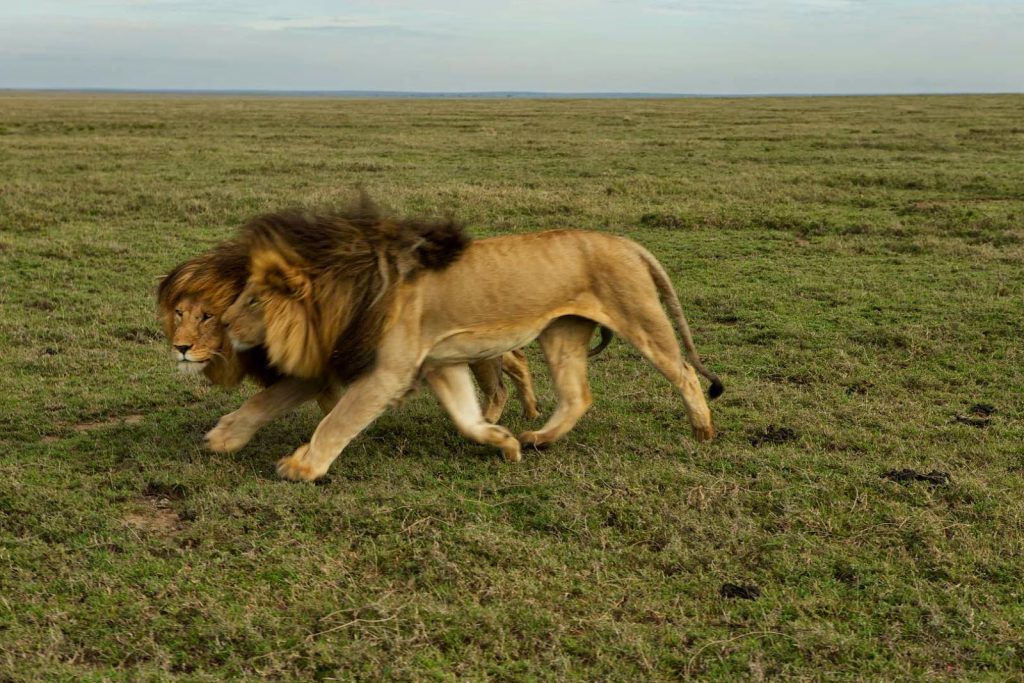Tanzania Trees
When you think of a Tanzanian safari, your mind likely conjures images of lions prowling the savanna, elephants lumbering across the horizon, or wildebeest stampeding during the Great Migration. But there’s another silent, yet equally captivating, character in this wild narrative: the trees. Tanzania’s diverse landscapes are home to some of the most iconic and unique trees in Africa, each with its own story to tell. From the sprawling savannas to the lush forests, these trees are not just a backdrop, they’re an integral part of the safari experience.
Here’s a guide to the trees you’re highly likely to encounter on your Tanzanian safari, and why they deserve your attention.
The Majestic Baobab (Adansonia digitata)
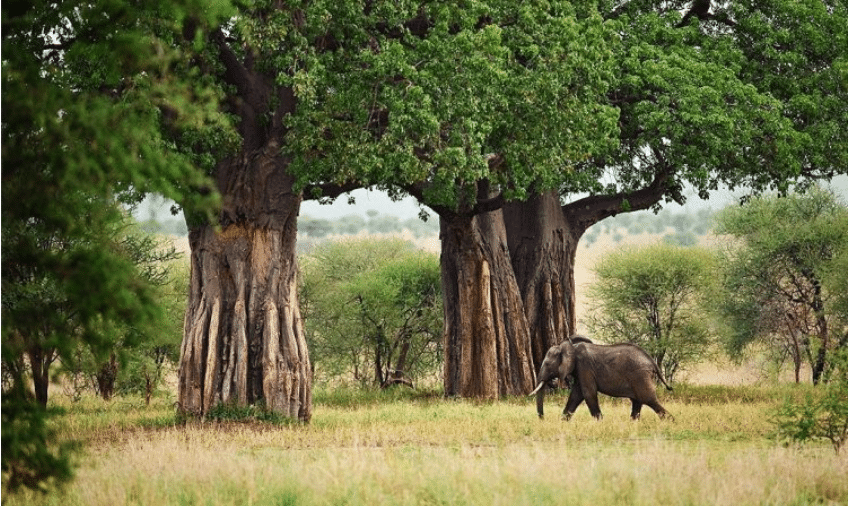
No tree symbolizes Africa quite like the baobab. With its massive, bottle-shaped trunk and sparse, root-like branches, the baobab is often called the “Tree of Life.” In Tanzania, these giants dot the landscape, particularly in Tarangire National Park, where some are over 1,000 years old.
Why it’s special:
Baobabs store thousands of liters of water in their trunks, making them a vital resource for wildlife during the dry season.
Their hollow trunks have been used as shelters, storage spaces, and even prisons by local communities.
The fruit, known as “monkey bread,” is packed with nutrients and is a favorite among elephants and baboons.
Best place to see them: Tarangire National Park, known as the “Land of Giants,” is home to some of the most impressive baobab groves in Tanzania.
The Iconic Acacia (Acacia tortilis)
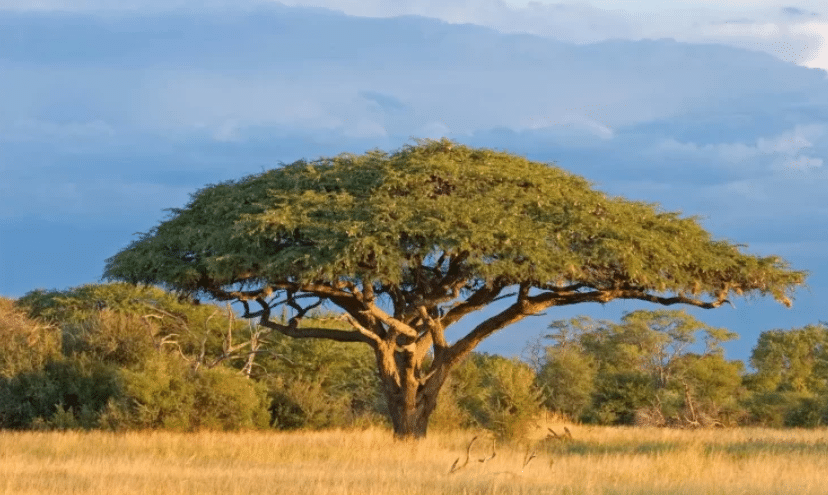
The acacia tree is the quintessential image of the African savanna. Its flat-topped canopy and thorny branches are instantly recognizable, often silhouetted against a fiery sunset.
Why it’s special:
Acacias are a lifeline for many animals. Giraffes nibble on their leaves, while birds like weavers build intricate nests in their branches.
The tree has a symbiotic relationship with ants, which protect it from herbivores in exchange for shelter and food.
Its roots dig deep into the soil, making it resilient in harsh, arid conditions.
Best place to see them: The Serengeti plains are dotted with acacias, providing shade for lions and cheetahs resting after a hunt.
The Mysterious Sausage Tree (Kigelia africana)
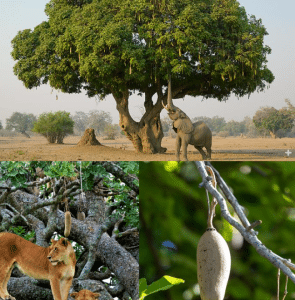
With its peculiar, sausage-shaped fruits hanging from long stalks, the sausage tree is hard to miss. While its fruits are inedible for humans, they play a crucial role in the ecosystem.
Why it’s special:
The large, woody fruits are a favorite food of elephants, hippos, and baboons.
The tree’s flowers are pollinated by bats, adding a touch of nighttime magic to its story.
Traditionally, its fruits and bark have been used in African medicine for treating skin conditions and other ailments.
Best place to see them: Look for sausage trees along riverbanks and in woodlands, particularly in Ruaha National Park and Selous Game Reserve.
The Towering Yellow Fever Tree (Varanopsis nilotica)
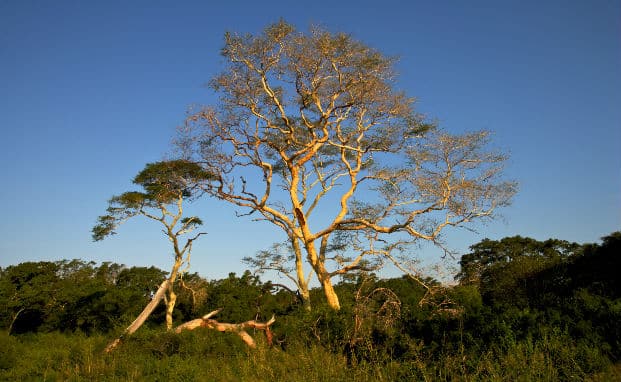
Named for its association with malaria (once mistakenly thought to be caused by the tree’s proximity to swampy areas), the yellow fever tree is a striking sight with its smooth, greenish-yellow bark.
Why it’s special:
It thrives in waterlogged areas, often lining the edges of rivers and swamps.
The tree’s canopy provides shade and shelter for birds, monkeys, and even leopards.
Its bark has been used in traditional medicine to treat fevers and other illnesses.
Best place to see them: The wetlands of Lake Manyara National Park are a great spot to admire these golden giants.
The Resilient Commiphora (Commiphora africana)
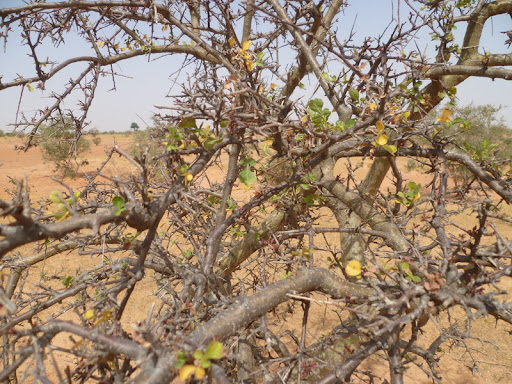
Part of the myrrh family, the commiphora tree is a hardy survivor of Tanzania’s arid regions. Its twisted, gnarled branches and peeling bark give it a rugged, ancient appearance.
Why it’s special:
The tree produces a fragrant resin that has been used for centuries in incense, perfumes, and traditional medicine.
Its ability to thrive in dry, rocky soils makes it a vital part of the ecosystem in semi-desert areas.
Birds and small mammals often seek refuge in its branches.
Best place to see them: The dry landscapes of northern Tanzania, including Lake Natron and parts of the Ngorongoro Conservation Area, are home to these resilient trees.
6. Strangler Fig (Ficus thonningii)
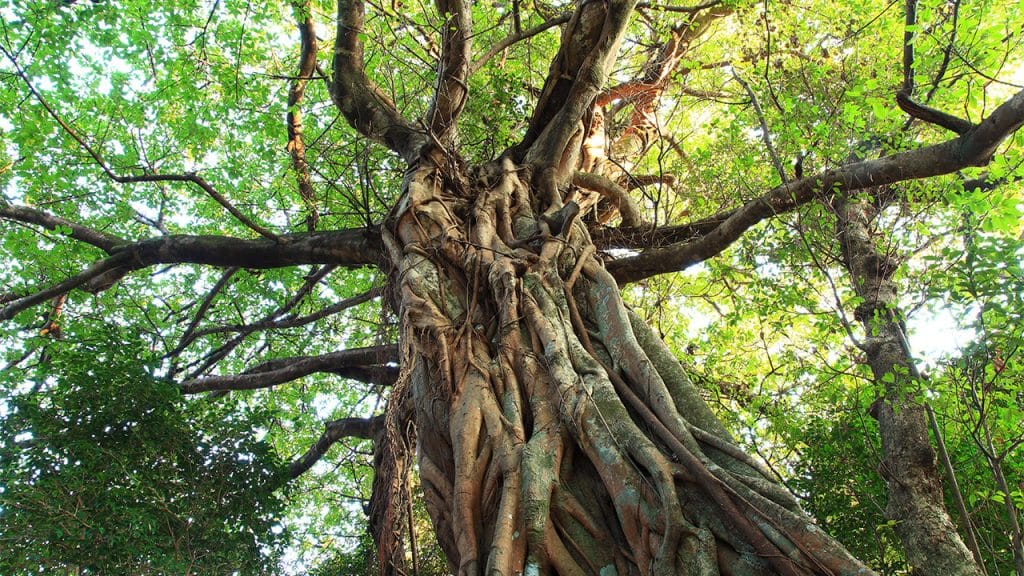
The Strangler Fig is a tree with a dramatic life story. It begins its life as a tiny seed, often deposited high in the branches of another tree by a bird or monkey. From there, it grows downward, sending roots toward the ground while simultaneously climbing upward to reach the sunlight. Over time, these roots envelop the host tree, eventually “strangling” it and taking its place in the forest canopy.
Why it’s special:
Strangler Figs are vital to their ecosystems. Their fruit is a favorite food for birds, bats, and monkeys, making them a hub of activity.
The hollow center of a mature Strangler Fig is often the remains of the host tree it has overtaken, creating a unique and eerie structure.
In some African traditions, the Strangler Fig is seen as a symbol of resilience and transformation.
Best place to see them: Strangler Figs thrive in forested areas, such as the montane forests of the Ngorongoro Conservation Area or the riverine forests of the Selous Game Reserve.
7. Toothbrush Tree (Salvadora persica)
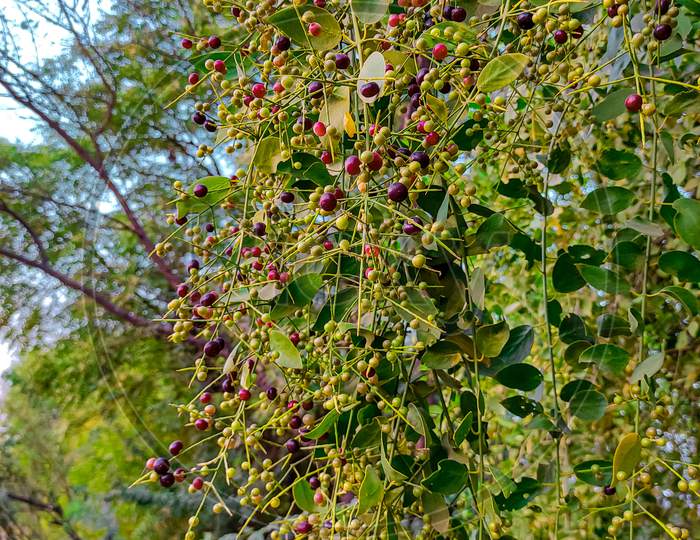
The Toothbrush Tree, also known as the Mustard Tree or Miswak, is a small, shrub-like tree that plays a surprisingly important role in both nature and human culture. Its name comes from its traditional use, its twigs have been used as natural toothbrushes for centuries.
Why it’s special:
The twigs of the Toothbrush Tree contain antibacterial properties and are still used in many parts of Africa and the Middle East for oral care.
Its small, berry-like fruits are a source of food for birds and small mammals.
This hardy tree thrives in arid and semi-arid regions, making it a crucial part of the ecosystem in dry areas.
Best place to see them: Look for Toothbrush Trees in the drier regions of Tanzania, such as the Maasai Steppe or the edges of Lake Eyasi.
Why Tanzania’s Trees Matter
Tanzania’s trees are more than just scenic backdrops, they’re the unsung heroes of the ecosystem. They provide food, shelter, and water for countless species, from the tiniest insects to the largest mammals. They also play a crucial role in combating climate change by storing carbon and stabilizing the soil.
On your next safari, take a moment to appreciate these natural wonders. Whether it’s the towering baobab, the iconic acacia, or the mysterious sausage tree, each one has a story to tell. And who knows? You might just find yourself as captivated by the trees as you are by the wildlife.
Tips for Tree Spotting on Safari
Bring binoculars: Some of the most interesting tree dwellers, like birds and monkeys, are easier to spot with a closer look.
Ask your guide: Local guides are a wealth of knowledge about the trees and their ecological roles.
Visit different ecosystems: From savannas to forests to wetlands, each habitat offers unique tree species.
Tanzania’s trees are waiting to be discovered. So, the next time you’re on safari, look beyond the Big Five and let the canopy tell its story.

